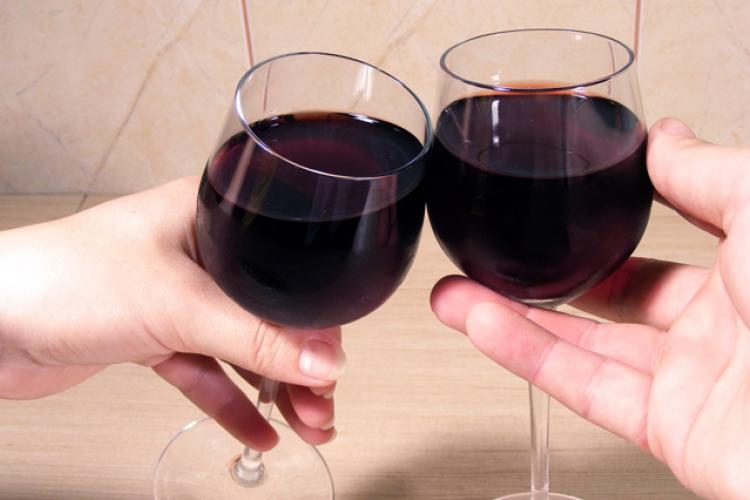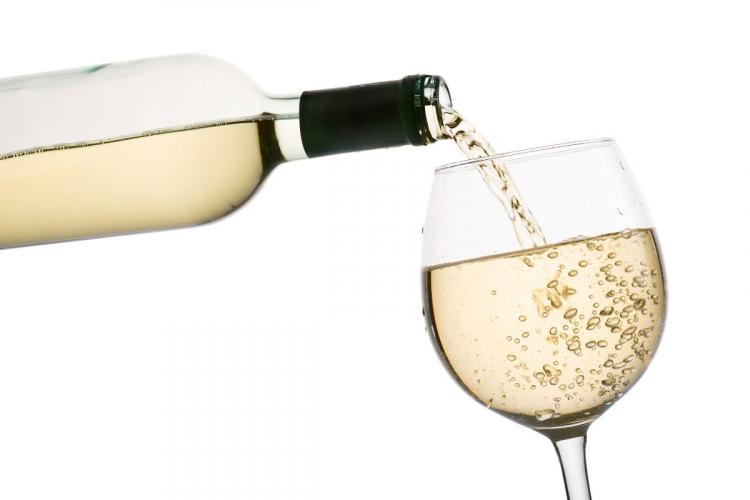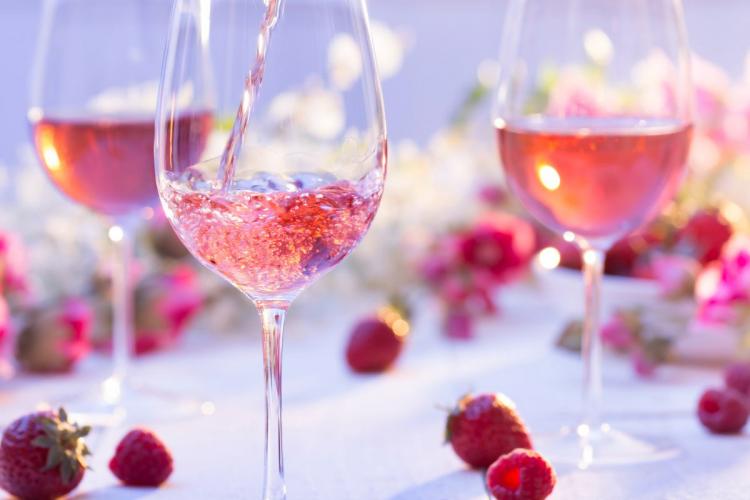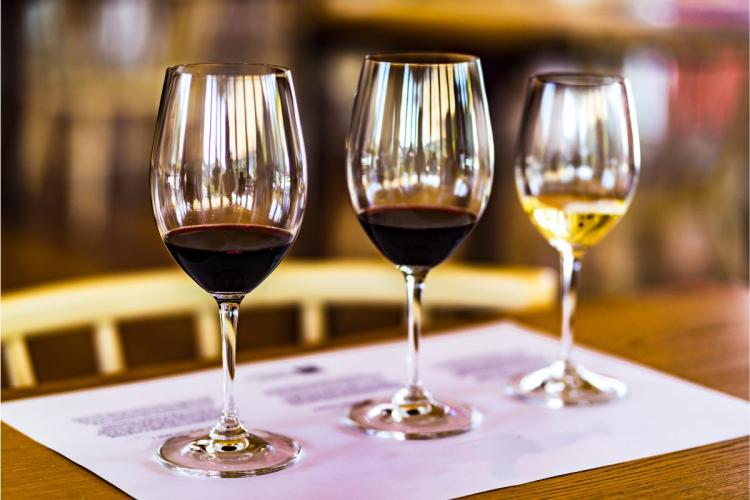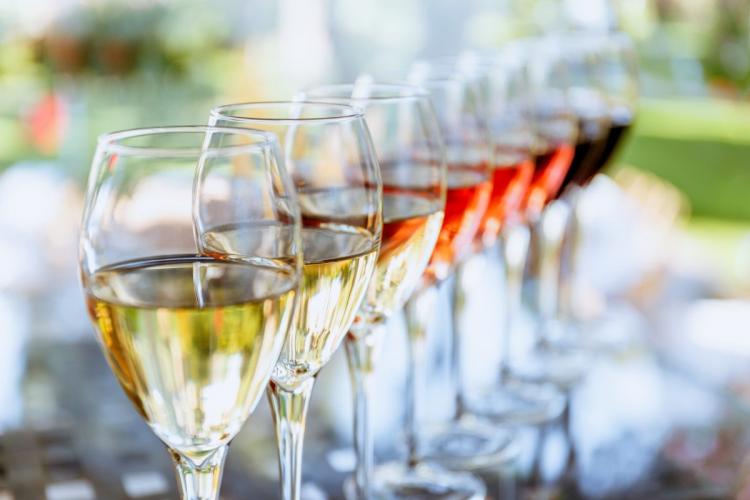The comprehensive guide to the color of wine
Did you know that the color of wine can reveal a treasure trove of information?
From age and quality to taste and body, the hues of your favorite wines hold the key to unlocking their true potential. So grab your favorite glass and embark on a colorful journey through the world of wine as we explore the fascinating spectrum and the secrets they hold.
Wine tasting for color
- Wine color can provide insight into its taste, body, age and quality.
- Factors influencing wine color include grape variety, terroir, winemaking techniques and the aging process.
- Wine tasting tips for evaluating colors help enhance your understanding of different wines to inform food pairing decisions.
The importance of wine color
Wine’s color is a window into the soul of the wine, offering valuable insights into the taste, body, age, and quality of a Cabernet Sauvignon, a Pinot Noir, or even a delicate Sauvignon Blanc. By understanding the nuances of wine color, enthusiasts can make informed choices, ensuring they select the perfect wine for any occasion.
The color of wine can be influenced by a variety of factors, including grape variety and terroir, winemaking techniques, and the aging process. Mastering the art of wine color assessment can help you identify a young wine from an aged one, a light-bodied red wine from a full-bodied one, or even a honey-colored dessert wine from a bright pink rosé.
Taste and body
The color of a wine can be a reliable indicator of its taste and body. Lighter hues in red wines, such as Pinot Noir, suggest lighter flavor profiles and a light-bodied red wine, whereas darker colors, like those found in Nebbiolo or Mourvedre, typically point towards more robust flavors, high acidity, and a higher tannin texture.
For white wines, pale yellow or whitish colors such as Chenin Blanc, Pinot Blanc, Pinot Gris, or Sauvignon Blanc often indicate a dry, crisp flavor profile, while a deeper, more intensely-yellow hue may suggest a more complex style of wine, with oak and spice notes acquired through bottle aging.
Age and quality
When it comes to determining a wine’s age and quality, color can be quite revealing. As red wine ages, the anthocyanins in the wine bind to the tannins and precipitate out, resulting in a shift from its original hue to a dusty brick red, and eventually brown. On the other hand, white wines tend to become more golden or amber as they age, often signifying a sweeter, matured wine that has undergone an oxidative aging method.
The pH level of a wine can also provide valuable information about its color and age. Lower pH levels suggest a lighter color and higher acidity in wine. Higher pH levels, on the other hand, indicate darker color, increased tannin and acidity levels as well as a longer aging potential.
Factors influencing wine color
The color of wine is a complex tapestry woven by various factors, such as:
- wine grapes and their specific grape variety
- terroir
- winemaking techniques
- the aging process
Each of these elements plays a crucial role in determining the final hue of your favorite wines, whether it’s a vibrant young red or a sophisticated, aged white.
By delving deeper into these factors, we can uncover the intricate details that give each wine its unique color and character. This knowledge can enhance our wine tasting experiences and broaden our understanding of the diverse world of wines.
Grape variety and terroir
Grape variety and terroir are undeniably significant factors in determining the color of a wine. Thicker-skinned grapes, such as Cabernet Sauvignon, and warmer climates tend to yield wines with darker colors. In contrast, cooler climates and thinner-skinned grape varieties, like Pinot Noir, often result in lighter-colored wines.
Terroir, the unique combination of soil, climate, and other environmental factors, can also play a critical role in shaping the color of the wine. The ripeness and phenolic development of the grapes, which can be influenced by terroir, have a direct impact on the wine’s color.
Winemaking techniques
Winemaking techniques can significantly influence the color of a wine. Some examples include:
- Maceration: Extended maceration can lead to darker colored wines.
- Fermentation temperature: Different fermentation temperatures can affect the extraction of color compounds from the grape skins.
- Aging in oak barrels: Oak aging can contribute to the color of the wine.
- Extended aging: Extended aging can result in lighter colored wines.
Winemakers may also employ various methods to stabilize the color of red wines, ensuring that it remains vibrant and stable over time. The artful combination of these techniques can create a wide array of wine colors, each with its distinct hue and intensity.
Aging process
The aging process can have a profound impact on the color of wine. Over time, oxidation and the interaction between tannins and anthocyanins can cause shifts in the hue and intensity of a wine’s color. This transformation can be seen in both red and white wines, with each type of wine aging differently.
Red wines tend to lose color as they age, with the once-vibrant hues evolving into a more subdued brick red or even brown. White wines, on the other hand, may become more golden or amber as they age. The choice of aging vessel, such as oak barrels or stainless steel tanks, can also influence the final color of the wine.
Exploring red wine colors
The world of red wine colors, originating from red grapes, is as diverse as the grapes they are made from. With over 40 color variations, red wines can range from:
- Pale ruby
- Medium ruby
- Deep ruby
- Pale garnet
- Medium garnet
- Deep garnet
Each hue provides insight into factors such as grape variety, age, and sulfite content, all of which contribute to the overall quality of grape juice.
To truly appreciate the nuances of red wine colors, it is essential to understand the factors that contribute to their unique hues. By delving into the grape varieties, winemaking techniques, and aging processes that shape these colors, we can better comprehend the fascinating spectrum of red wines and their corresponding characteristics.
Discovering white wine colors
White wine colors are a reflection of the delicate and subtle flavors they embody. Ranging from pale straw to golden-honeyed hues, the colors of white wines can provide information about their age, grape variety, and even the winemaking techniques used in their production. Among these, honey colored dessert wines hold a special place for their rich and luscious taste.
Younger white wines often display greenish tints, while older white wines exhibit warmer golden shades. By understanding the various hues and what they reveal about the wine, we can better appreciate the intricate flavors and qualities that white wines bring to our palates.
Unveiling rosé wine colors
Rosé wines are a delightful blend of color and flavor, with their hues spanning a range of pink shades. The color of rosé wines is determined by factors such as grape variety and the duration of skin contact during the winemaking process.
From pale salmon to deep pink, the various shades of rosé wines can provide valuable insights into their taste profiles and characteristics. By exploring the factors that influence these captivating hues, we can fully appreciate the diverse world of rosé wines and the unique qualities they bring to our wine glasses.
Assessing wine color: A step-by-step guide
A comprehensive understanding of wine color involves a careful assessment of the hue spectrum, intensity, and appearance. Each of these elements plays a key role in revealing the wine’s characteristics, allowing you to make informed decisions about the type, quality, and age of the wine.
To accurately assess wine color, it is essential to follow a step-by-step guide that covers observing the hue spectrum, gauging intensity, and evaluating appearance. By mastering this process, you can enhance your wine tasting experiences and broaden your understanding of the diverse world of wines.
Observing hue spectrum
The hue spectrum of a wine can provide valuable insights into its age, acidity, and flavor profile. Red wines can exhibit shades ranging from violet to a bluish tint, while white wines can span from lemon to gold.
By observing the hue spectrum, you can gain a deeper understanding of the wine’s characteristics and make more informed decisions about its suitability for your palate. This knowledge can also enhance your wine tasting experiences, allowing you to appreciate the nuances and complexities of each wine.
Gauging intensity
The intensity of a wine’s color can help determine its body, tannin levels, and overall flavor strength. A high concentration of fruit is indicative of a higher intensity of wine. By gauging the intensity of a wine’s color, you can gain a better understanding of its characteristics and make more informed decisions about its compatibility with your taste preferences.
This knowledge can also enhance your wine tasting experiences, allowing you to appreciate the intricate flavors and qualities that each wine brings to the table.
Evaluating appearance
Evaluating the appearance of a wine in a wine glass, including its transparency and opacity, can offer clues about its grape variety and age. The clarity and brightness of a wine can provide valuable information about its quality and characteristics.
By examining the appearance of a wine, you can gain a deeper understanding of its nuances and complexities. This knowledge can enhance your wine tasting experiences and help you make more informed decisions about the type, quality, and age of the wine.
Wine tasting tips for color evaluation
To accurately assess wine color during tastings, it is essential to follow some practical tips. These include using a white background, proper lighting, and examining the wine from different angles. By doing so, you can accurately assess the hue, intensity, and appearance of the wine, gaining valuable insights into its characteristics and qualities.
By incorporating these tips into your wine tasting routine, you can enhance your understanding of the diverse world of wine colors and appreciate the unique qualities and nuances of each wine. This knowledge can also improve your overall wine tasting experience, allowing you to make more informed decisions about the type, quality, and age of the wine.
Decoding wine colors with a visual guide
A visual guide to decoding wine colors can be an invaluable resource for wine enthusiasts looking to better understand the nuances of different wine hues and what they reveal about the wine’s characteristics. Sources like socialvignerons.com and winefolly.com provide detailed explanations and visuals to assist in understanding the color variations in wine.
By utilizing a visual guide to decode wine colors, you can enhance your wine tasting experiences and broaden your understanding of the diverse world of wine. This knowledge can also help you make more informed decisions about the type, quality, and age of the wine, ensuring you select the perfect wine for any occasion.
Wine color and food pairing
The color of a wine can play a significant role in food pairing. Lighter-colored wines often complement delicate dishes, while darker-colored wines pair well with richer, more robust flavors. By considering the color of a wine, you can make more informed decisions about which dishes to pair with your chosen wine, ensuring a harmonious dining experience.
Whether you’re enjoying a crisp, light-bodied red wine with a fresh salad or a full-bodied, deeply colored red wine with a hearty steak, understanding the relationship between wine color and food pairing can elevate your culinary experiences and deepen your appreciation for the diverse world of wine.
Just grape juice
In conclusion, the color of wine holds a wealth of information, providing insights into taste, body, age, and quality. By understanding the factors that influence wine color, such as grape variety, terroir, winemaking techniques, and the aging process, and mastering the art of assessing hue, intensity, and appearance, you can enhance your wine tasting experiences and make more informed decisions about the type, quality, and age of the wine. So raise your glass and embark on a colorful journey through the world of wine, discovering the secrets that lie within each captivating hue.
Frequently asked questions about wines
What is the color of wine called?
The color of wine is a dark shade of red, sometimes referred to as bordeaux, vinous or vinaceous. It is created from the pigment anthocyanin present in the skins of red or black grapes. The acidity and amount of time that the grape skins are in contact with the juice also affect the color.
The color of a wine can range from a light pink to a deep purple, depending on the variety of grape used and the amount of time the skins are left in contact with the juice. The color of a wine.
What are the 5 colors of wine?
Red, white, pink, yellow, and orange are the five fundamental colors of wine, crafted with careful attention from the viticulturists and winemakers.
Each color has its own unique characteristics and flavor profiles, making it essential for winemakers to understand the nuances of each hue. They must be able to identify the subtle differences between the colors and use them to craft a balanced and flavorful wine.
What is the significance of the color of wine?
The color of wine provides an indication of age, grape variety, flavor and acidity, allowing experienced wine drinkers to discern the properties of a bottle just by looking at it.
This is a useful skill for wine connoisseurs, as it allows them to quickly identify the characteristics of a bottle without having to taste it.
What is the color of red wine?
Red wine can range from ruby to magenta and tawny, usually indicating age. Beaujolais Nouveau is an example of a very young, fresh and fruity red wine.
What factors are known to influence wine color?
Grape variety, terroir, winemaking techniques, and aging all contribute to the color of wine, making it one of the most complex and interesting aspects of the beverage.
The color of a wine can range from pale yellow to deep ruby red, and can even be a shade of orange or brown. It can be affected by the type of grape used, the soil and climate of the vineyard, the winemaking process, and the weather.

